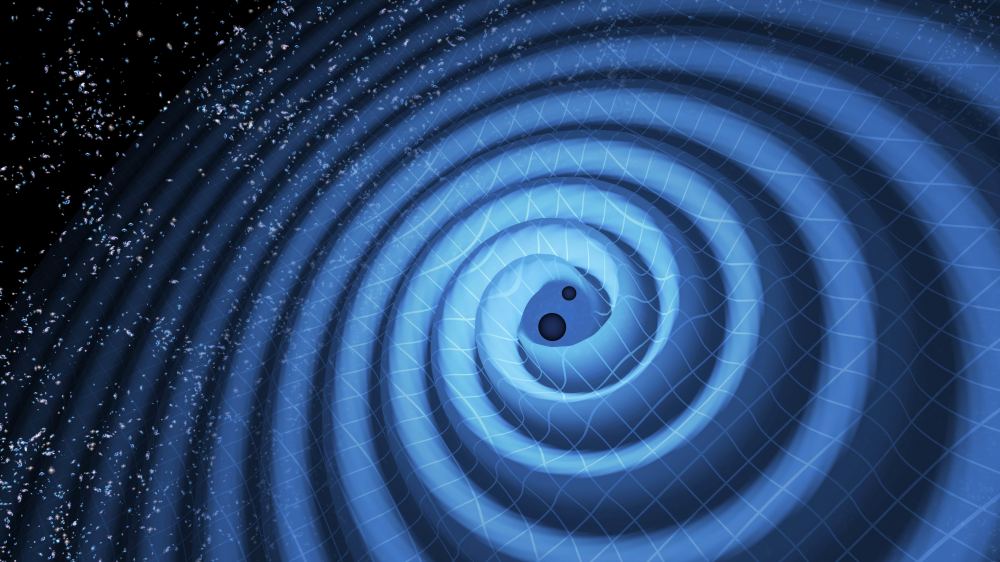Einstein's Theory of General Relativity predicted that black holes would form and eventually collide. It also predicted the creation of gravitational waves from the collision. But how often does this happen, and can we calculate how many stars this will happen to?
A new study from a physicist at Vanderbilt University sought to answer these questions.
LIGO (Laser Interferometer Gravitational-Wave Observatory) ushered in a new era of astronomy when it first detected gravitational waves in 2015. Those waves came from a collision between two massive black holes about 1.3 billion years ago. The waves proved Einstein right, again.
Since that first collision between two black holes, LIGO has announced the detection of more than 40 black hole collisions, called Binary Black Hole (BBH) events. 10 of those BBH events have been confirmed. The first detection was an exciting moment, but that excitement has abated a little. Now astrophysicists have some questions.
"Researchers up until now have theorized the formation and existence for pairs of black holes in the universe, but the origins of their predecessors, stars, still remains a mystery." Karan Jani, Lead Author, Vanderbilt University
Karan Jani is an astrophysicist at Vanderbilt University who studies black holes. He's also a scientist with LIGO, who was involved in detecting the first gravitational wave. Jani was a co-recipient of the Special Breakthrough Prize in Fundamental Physics for that work.
The new study is titled " Global Stellar Budget for LIGO Black Hole s." It's published in the Astrophysical Journal Letters. The co-author is Abraham Loeb from Harvard University.
Einstein predicted black hole mergers and the resulting gravitational waves about one hundred years ago in his Theory of General Relativity. Now that LIGO has detected a number of those BBH events, two questions arise: how do stellar processes produce these massive black holes (30 solar masses or larger); and how do they get close enough together to merge, within the lifetime of the Universe?
"Researchers up until now have theorized the formation and existence for pairs of black holes in the universe, but the origins of their predecessors, stars, still remains a mystery," said Vanderbilt astrophysicist and lead author of the study Karan Jani. "With this study, we did a forensic study of colliding black holes using the astrophysical observations that are currently available. In the process, we developed a fundamental constraint, or budget, which tells us about the fraction of stars since the beginning of the universe that are destined to collide as black holes."
LIGO has a record of black hole mergers, and the researchers relied on that data—and Einstein's Theory of General Relativity—in this study. The authors used the LIGO events to create a kind of inventory of the Universe's space and time resources at any single point. As the press release says, "They then developed the constraints accounting for each step in the binary black hole process: the number of available stars in the universe, the process of each star transitioning to an individual black hole, and the detection of the eventual collision of those black holes—picked up hundreds of millions of years later by LIGO as gravitational waves emitted by the impact."
"From the current observations, we find that 14 percent of all the massive stars in the universe are destined to collide as black holes." Karan Jani, Lead Author, Vanderbilt University
The number the researchers calculated is 14%. But there are a couple qualifications to that number. It's applied only to the merger rate of two 30 solar mass black holes. And only if the separation between the two black holes is similar to the diameter of their progenitor stars.
There's a lot of detail in this study, naturally. The study explains that there is a mass budget in the universe that limits how many stars can become black holes in the 30 solar mass range. The authors sought to map the relationship between the mass of the progenitor and the black hole itself. That's no simple relationship, since the metallicity of the star, and the epoch it was born in, both come into play.
"From the current observations, we find that 14 percent of all the massive stars in the universe are destined to collide as black holes. That's remarkable efficiency on nature's part," added Jani. "These added constraints in our framework should help researchers trace the histories of black holes, answering old questions and undoubtedly opening up more exotic scenarios."
More:
- Press Release: How many stars eventually collide as black holes? The universe has a budget for that.
- Research Letter: Global Stellar Budget for LIGO Black Holes
- Universe Today: Gravitational waves were only recently observed, and now astronomers are already thinking of ways to use them: like accurately measuring the expansion rate of the Universe
 Universe Today
Universe Today
